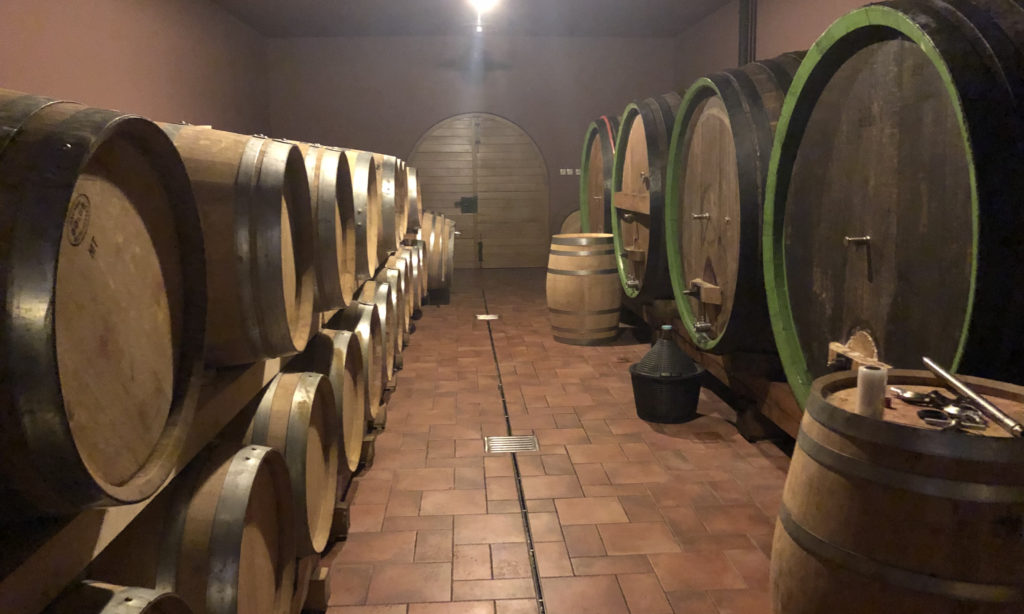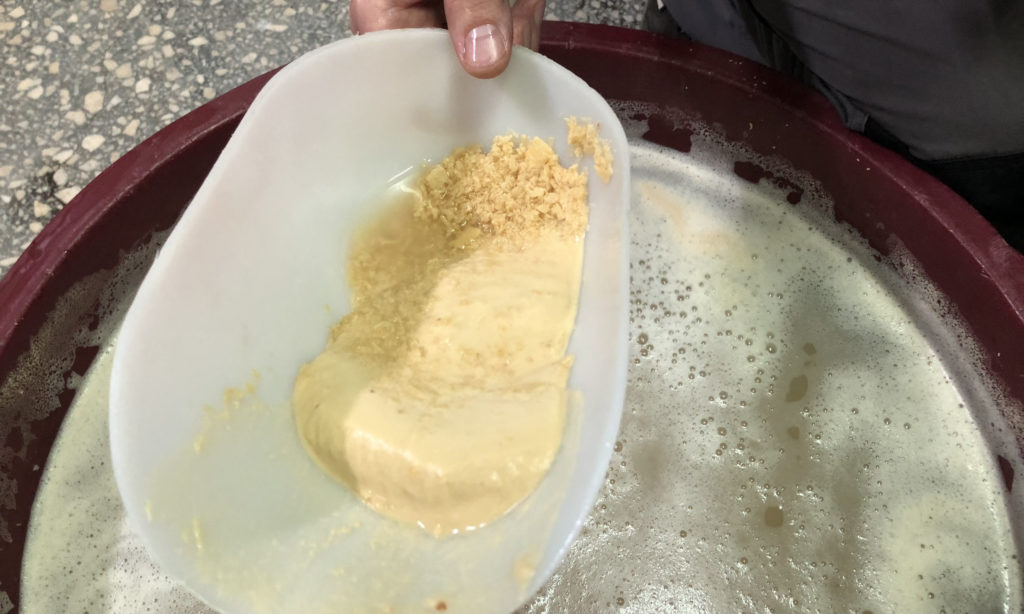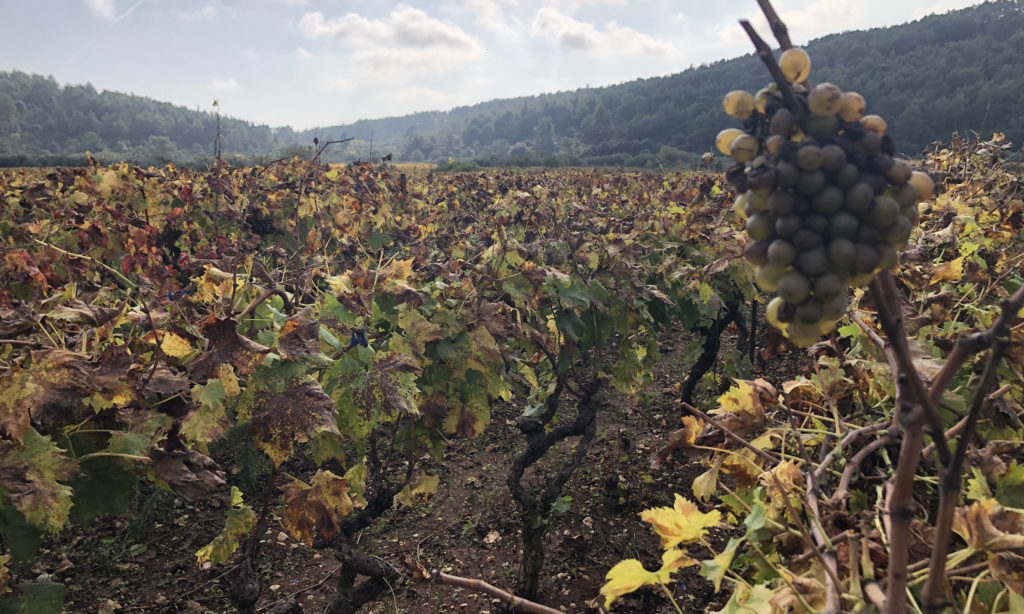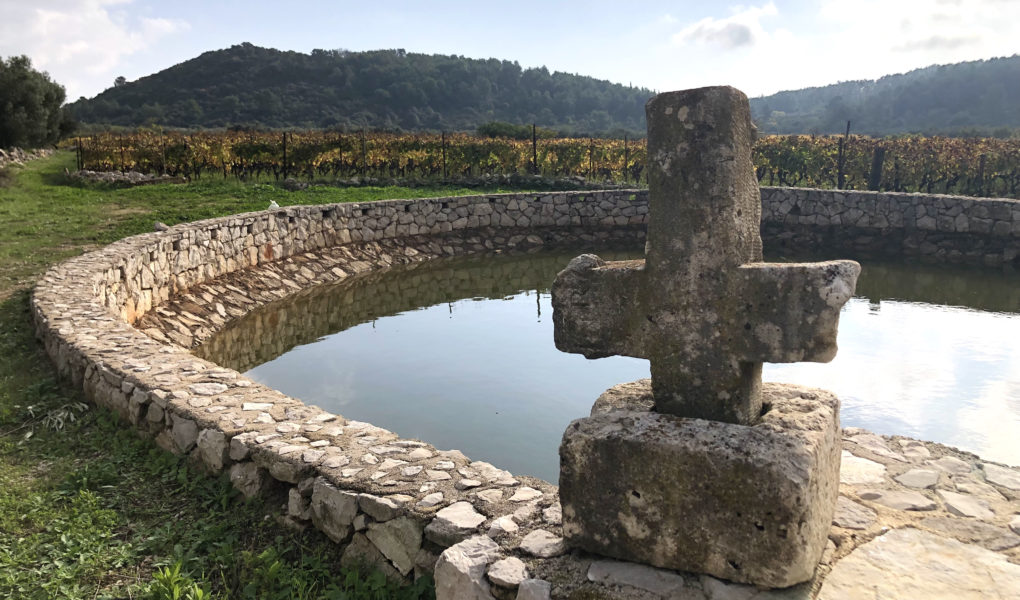This is the 11th in a series of 12 monthly articles following eight Croatian wineries through their year. Read about the process of fermentation in the October report.
Fermentation begins immediately after harvest and generally takes only two to three weeks. By November, it’s all over. What happens between now and bottling in the spring depends on the grape, color and style of the wine.
First, all wines need to settle after fermentation. During settling, the gross lees—the heavy yeast sediment and grape bits in white wines, or the yeast plus skins and pulp in red wines—drop to the bottom of the tank or vat due to gravity. The wine is then drawn off the top into a different tank or a barrel. At this point, the wine still contains fine lees—some yeast cells and tiny bits of grape pulp. These, too, may be allowed to settle, or they can be used to further flavor the wine.
Korak
We last spoke with Josip Korak in the first days of September, before harvest started. He estimated then that yields would be low due to the April frost, and in fact they were 40% lower than usual. Most of the loss was in Pinot Noir.
Looking on the bright side, low yields often mean extra-high quality, and that is what happened this year. “Sugar, acidity, pH—it’s perfect,” says Korak. Usually he is able to mature about 70% of their wine in oak. This year, the high quality makes him want all the wines to see some oak, and with less fruit he actually has the space to do this.
“Mostly it’s neutral oak. It’s not new barrels,” Korak explains. While new oak would give the wine flavor, oak that has been used for about three years or longer is considered neutral. It won’t add the woody, vanilla, clove or coffee flavor that can come from new oak. It does, however, give the wine contact with oxygen, which enters slowly through the pores of the wood, and occupies any air space at the top of the barrel, around the bung.

Allowing contact with oxygen (or not) is a stylistic choice in winemaking. Oxygen contact means a slightly softer style of wine, and more effective contact with yeast in the fine lees. “We like a little oxygen in our wine,” says Korak. “Always when you drink our wines, they have freshness, but they are very soft, very elegant.” The opposite style would be a super-bright and vividly fruity style of wine: less soft, more edgy.
At the moment, the base wine for Korak’s sparkling wine is resting in oak; it will spend a total of four or five months there before it is ready to be bottled for second fermentation. Meanwhile, the Sauvignon Blanc will spend about seven months in oak. Chardonnay and Pinot Noir will get more new oak and the wines will spend a little longer in barrels, 10 months for Chard and 18 to 24 months for Pinot.
While in barrels, the wines still contain their fine lees. Time “on the lees” gives the wine a greater sense of body. It can also impart a rich flavor similar to brioche or toasted almonds. The only problem is that the yeasts want to stick to the bottom of the barrel, where they have less contact with the wine and may develop undesirable odors. The solution is bâtonnage, a French term for stirring the lees. Korak does bâtonnage for all their wines, although he will choose to do it less often for a fresh-tasting wine like Sauvignon Blanc, and more for a richer one like Chardonnay. Because the yeasts are so thick and sticky, the tool for bâtonnage looks a bit like a stainless steel golf club. You insert it through the bung hole and scrape the yeasts off the bottom of the barrel, up one side and down the other.
Antunović
Branimir Turk is enthusiastic about harvest 2021. “The Chardonnay this year is amazing. We haven’t had Pinot Noir this good for years.”
In Turk’s cellar, too, the wines are settling—a process that takes about 48 hours for gross lees. The wine is then moved into a clean tank, where the fine lees will sink to the bottom. The winery team has to taste the sediment every two or three days after it settles, to make sure it is not developing off aromas. If it is, they will move the wine off the lees into yet another tank. If all is well, the wine can stay where it is. All told, from fermentation to bottling, the wine will see a series of either three tanks or two tanks and then barrels. “It’s not one big party. . . . It’s a process,” Turk says with a laugh.

Right now, Turk has barrels on his mind. “We bought, this June, a few new barrels of Slavonian oak, and I’m also thinking about buying some other oaks—I’m not really sure what type of oak, what barrel maker, but I’m thinking about buying new ones to replace the old ones. Because I have really nice red wines this year and it would be a shame for them to suffer because of lack of barrels.”
Most barrels come from France, the United States, Slavonia (very near Antunović) or Hungary. Each source of oak has a slightly different character. “It isn’t about having only one oak, one barrel maker in your cellar. I think the most interesting part is when you have five, six different barrels, and then you can play when you’re doing blending,” said Turk. He finds Slavonian oak to be subtler than the others; it allows the wine to show more of its terroir. Comparing oaks, Turk says, “French oak . . . can have coffee, chocolate flavors, pretty high vanilla. American oak can also have this arabica taste but much stronger, and also coconut; it’s very intense. I think Hungarian oak has a little sweeter taste.”
Right now Turk has Slavonian and American barrels. Whatever he decides to buy, it will be just one or two barrels, to test out how they work with the wine. “It’s a long process,” he says. “It’s not like brewing a beer. When you’re making a beer, whenever you do some experiment, make a mistake or have some revelation you can repeat it every day. [With wine] we have to wait for another year.”
Krajančić
Driving through the Čara valley in early November, we enjoy the autumnal vision of slanting sunlight illuminating the golden vine leaves. All around the vineyards, Korčulans are engaged in the year’s second important harvest: olives.
“We are letting the vines rest after the harvest,” says Ivana Krajančić. After a long, dry summer, the recent rainfall is reviving and strengthening the vines for their dormant season. In January, pruning will start once again.

At Krajančić, too, the wines are settling in tanks. Here, the white Pošip wines are made largely without oxygen contact, which preserves the heady aromas in these grapes. “Hopefully the wines will stay as aromatic as they are right now,” says Krajančić. “Pošip has stages. During and just after fermentation the wines are very aromatic. [But] a month after fermentation, at the end of October and beginning of November, you have nothing—you don’t even know that you are smelling wine. My dad says the wine has closed.” Normally this would be happening right now, but for some reason this year is different. If the wines lose their aroma—if they close—they will open up again given a little time.
“In the next couple of weeks we will start the final clarification and start fining.” Clarification is another term for settling the fine lees. Fining is the next stage. If the wine maker wants a fresh style of wine, there will be no bâtonnage or oak, and the wine will be fined sooner. Most wines are fined, because fining removes tiny proteins in the liquid, making it bright and clear. It also stabilizes the wine against certain types of spoilage, and can remove harsh tannins and bitterness from red wines.
During fining, a substance is added to the wine that binds with the proteins, creating larger molecules that can then be filtered out of the wine. Bentonite clay is often used to fine white wines, and this is one of the fining agents Krajančić uses. Others, such as egg whites, isinglass (a fish product) or casein (from milk) are derived from animals. Vegans may wish to avoid these fining agents, although they do not remain in the wine.
This year Krajančić produced three red wines, seven whites, and their rosé. The newest addition to the lineup is their premium Plavac Mali from their steepest vineyards. They may release the first vintage (2020) next year.
[Title photo: A catchment for water in Čara valley. Staff/CCM]

